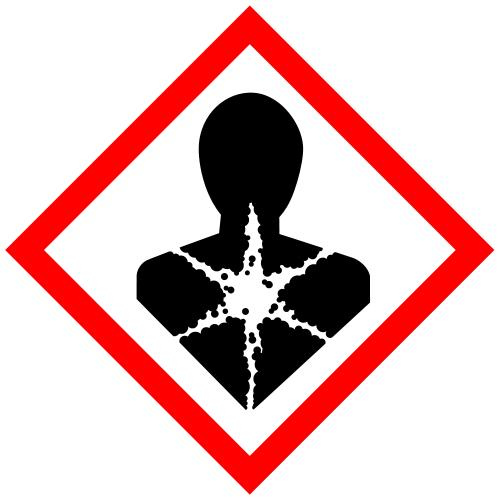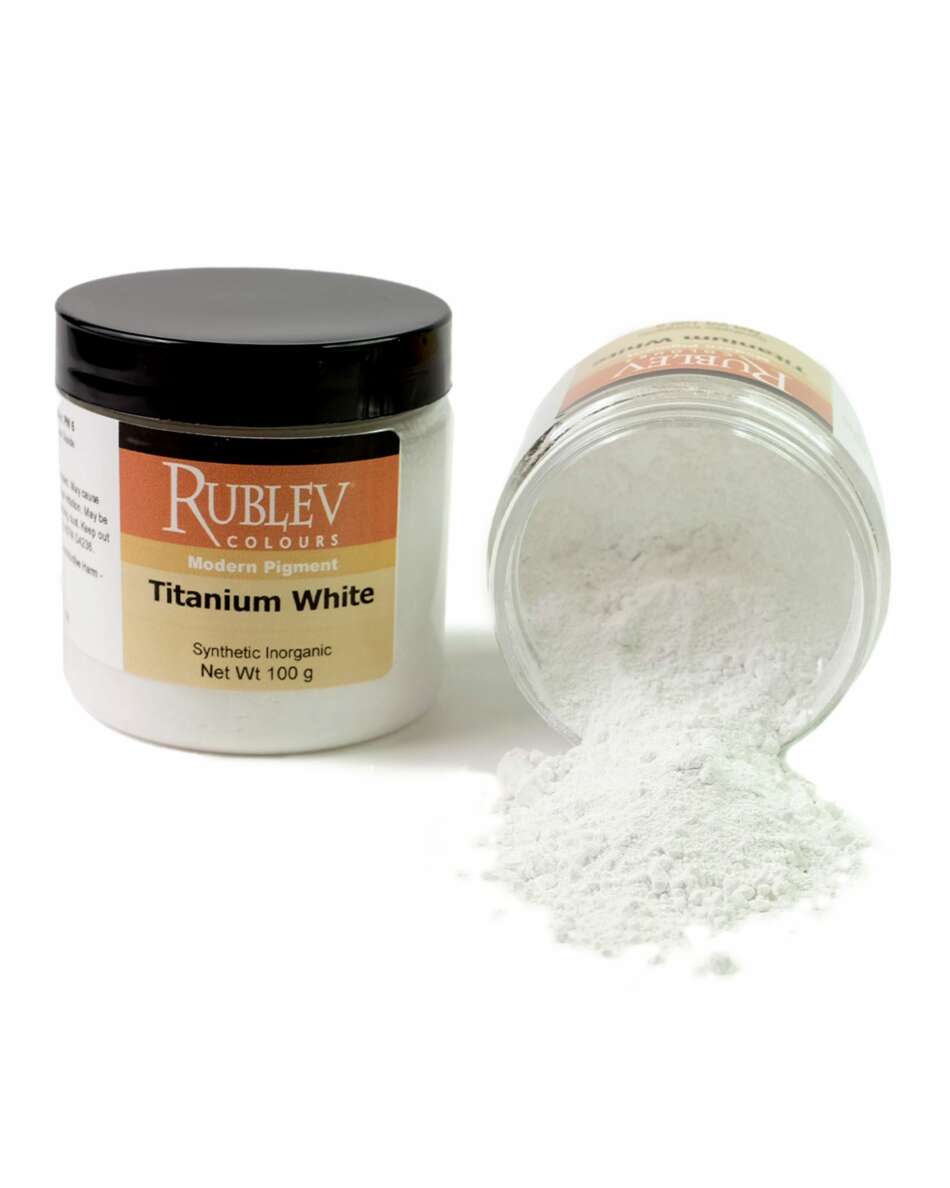Titanium dioxide was banned in certain applications and jurisdictions due to concerns over inhalation toxicity in powdered form. Regulatory bodies in some countries have restricted its use in food products and other ingestible items, emphasizing the need for cautious application and handling, particularly in industrial and non-food contexts.
Titanium Dioxide: The Ultimate White Pigment for Artists and Paint Makers
Titanium White is a synthetic white pigment with high hiding power, nontoxic, permanent, and usable in all mediums. Explore the whiteness and opacity of Rublev Colours Titanium Dioxide White Pigment. Perfect for artists seeking the highest-quality white pigment. Learn about its applications, history, and safety today.
Titanium white (titanium dioxide) pigment is a fine white powder. When used in paints, it provides for maximum whiteness and opacity. It gives paint high hiding power, meaning the ability to mask or hide the substrate underneath. It does this more effectively than any other white pigment. Today, titanium white pigment is by far the most important material used by the paint industry for whiteness and opacity. These unique properties are derived from the refractive index of titanium white. The refractive index expresses the ability to bend and scatter light. Titanium white has the highest refractive index of any material known to man, greater even than diamond. To take advantage of this property, titanium white must be mined, refined, and ground to a fine, uniform particle size.
Titanium white pigments are developments of the 20th century, and because of their high hiding power, low toxicity, and reasonable cost, they have eclipsed other traditional white pigments.
Our titanium white is R2 grade rutile pigment that:
Imparts maximum brightness and a neutral tone in white coatings,
Produces brilliant, clean tints,
It is readily dispersed and meets all requirements of modern production methods,
It gives very high hiding power and is thus economical in use,
Produces low-haze, high-gloss coatings, and
It is suitable for all outdoor oil, solvent, and water-borne paints and coatings.
| Pigment Names | |
| Common Names (pigment): | English: titanium white, titanium dioxide French: oxyde de titane German: Titandioxid Italian: bianco di titanio Norwegian: titandioksid Russian: Spanish: dióxido de titano |
| Common Names (variety): | English: anatase, rutile French: anatase, rutile German: Anatas, Rutil Italian: anatasio, rutilo Norwegian: anatas, rutil Russian: Spanish: anatasa, rutilo |
| Alternate Names: | Titania, titanium white, permanent white |
Origin and History
Titanium dioxide can refer to any pigment containing a compound of titanium. The name “Permanent White” has been applied to many pigments, including titanium white. Such imprecise names can confuse, and many are still used today. At the beginning of the 20th century, the development of titanium white pigment occurred simultaneously in Norway and the United States. Several processes were later developed and patented by companies in both countries. The use of titanium dioxide as a white pigment in artist’s palettes began in field tests as early as 1916, but it wasn’t until the 1940s that widespread use of the pigment began.
Source
Nature does not yield titanium white in a form usable as a pigment. Titanium white is usually associated with iron, mainly as the mineral ilmenite. It is also mined in one of the pure forms, rutile beach sand. Deposits of titanium-bearing minerals used as the basic raw materials in manufacturing titanium white pigments can be found in many places on the earth.
Pigment manufacturers convert these raw materials to produce titanium white pigments. The production of titanium white pigments is a refinement process. This may be achieved by either the sulfate process, which uses sulfuric acid as a separating agent, or the chloride process, which works with chlorine. Once refined and developed to the appropriate particle size, the pigment may be surface treated with inorganic oxides and an organic compound to achieve better technical performance, such as easy processability or higher weather durability.
Permanence and Compatibility
Both rutile and anatase forms of titanium white are lightfast. However, according to Marilyn Laver (see note 6), exposure to light can cause a phototropic color change under certain circumstances. Rutile undergoes this reversible color change to a lesser extent than does anatase. The rutile and anatase pigment forms are chemically inert and do not react with airborne pollutants, organic solvents, or other pigments. Increased weather resistance and dispersibility of titanium white pigments are provided by coating the pigment with inorganic or organic substances. Our grade of titanium white is coated with alumina, silica, and zirconia compounds. Some suggest that the resistance of titanium white pigments to acids and alkalies is an advantage for their use in true fresco.
Oil Absorption and Grinding
Titanium white absorbs a low amount of oil. The oil absorption ratio is 15–20 parts by oil weight to 100 parts by weight of pigment. If the measurement were grams, it would require 15 to 20 grams (by weight) of linseed oil to grind 100 grams (by weight) of pigment to form a stiff paste. It makes an average drying oil paint that forms a soft, brittle film.
Toxicity
Titanium white pigments have been produced and processed for nearly a century, and no acute or chronic harmful effects attributable to titanium dioxide have become known. Titanium white is not considered hazardous, but care should be taken in handling the dry powder pigment to avoid inhaling the dust. The Occupational Exposure Standards (OES) for titanium dioxide in the air at the workplace have been set at 3 mg/m3 total respirable dust. Titanium white is not expected to have any mutagenic, carcinogenic, fibrogenic, toxic, or allergenic effects if this value is adhered to.

Rublev Colours Pigment: Titanium Dioxide (Titanium White)
| Pigment Information | |
| Color: | White |
| Colour Index: | Pigment White 6 (77891) |
| Chemical Name: | Titanium Dioxide (Rutile) |
| Chemical Formula: | TiO2 |
| CAS No. | 13463-67-7 |
| EINECS No.: | 236-675-5 |
| Production: | Rutile pigment produced by the chloride process |
| Surface Treatment: | Aluminum, zirconium, and organic compounds |
| ASTM Lightfastness Rating | |
| Acrylic: | I |
| Oil: | I |
| Watercolor: | I |
| Properties | |
| Standard Classification:1 | Type R2 Type VII |
| TiO2 content (DIN EN ISO 591): | ≥92.5% |
| Density:2 | 4.1 g/cm3 |
| Specific Gravity: | 4.1 |
| Bulk Density (Tamped):3 | 119.8 kg/m3 (34.2 lbs/gal) |
| pH Value (10% suspension): | 7.5 |
| Hardness: | – |
| Crystal Size: | 0.22 microns |
| Refractive Index: | n=2.72 (rutile) |
| Relative Scattering Power:4 | 102 |
| Oil Absorption (DIN EN ISO 787-5): | 19 g/100 g pigment |
| Weather Resistance:5 | A |
| ASTM D476 Designation | II, III, IV |
Notes
1. The classification A1, A2, R1, R2, R3 corresponds to DIN EN ISO 591-1:2000, Part 1. The classification Type VII corresponds to ASTM D476 (2000).
2. The titanium dioxide content and density of the pigments depend on the type and quantity of the treatment substances used to improve the application properties. Pure rutile has a density of 4.2, while pure anatase has a density of 3.8.
3. Based on ISO 787/11.
4. The relative scattering power is the decisive parameter for titanium white pigments' tinting strength and hiding power. The scattering power is determined based on DIN 53165.
5. Code for weather resistance:
A = Maximum weather resistance
B = Good weather resistance
C = Limited weather resistance
6. See Martin Laver, “Titanium Dioxide White” in Elizabeth West Hugh, ed., Artist’s Pigments: A Handbook of Their History and Characteristics, Volume 3, Washington, D.C., National Gallery of Art, 1997), 340.
Frequently Asked Questions
Why was titanium dioxide banned?
Is titanium dioxide good or bad for you?
Titanium dioxide is considered safe for use in many applications, including cosmetics and paints. However, its safety as a food additive has been questioned, leading to bans or restrictions in some regions. When used in non-ingestible products and handled properly, it poses minimal risk to human health.
| SKU | 475-21 |
|---|---|
| Brand | Rublev Colours |
| Vendor | Natural Pigments |
| Processing Time | Usually ships the next business day. |
| Color | White |
| Pigment Type | Inorganic, Synthetic |
California Proposition 65: This product contains a chemical known to the State of California to cause cancer and birth defects or other reproductive harm.
Hazard Pictograms
 |
| GHS08: Health Hazard |
Signal Word: Warning
GHS Classifications:
Skin irritation: Category 3
Carcinogenicity: Category 2
Hazard Statements
H316 Causes mild skin irritation.
H351 Suspected of causing cancer.
Precautionary Statements
P281 Use personal protective equipment as required.
Potential Health Effects
Eyes Causes eye irritation.
Inhalation May be harmful if inhaled. Causes respiratory tract irritation.
Skin May be harmful if absorbed through skin. Causes skin irritation.
Ingestion May be harmful if swallowed.



